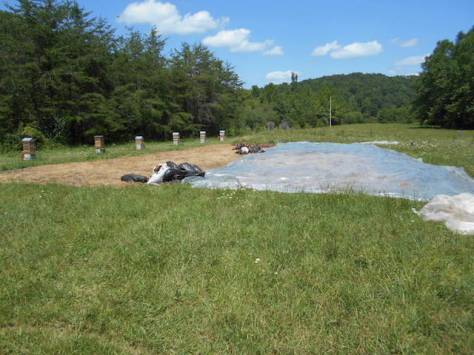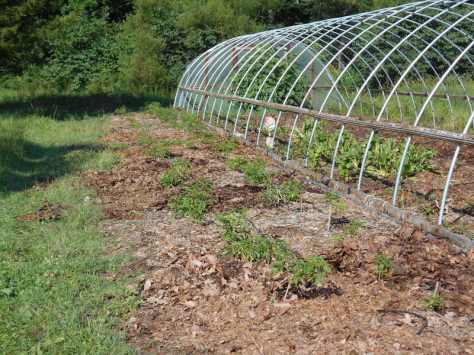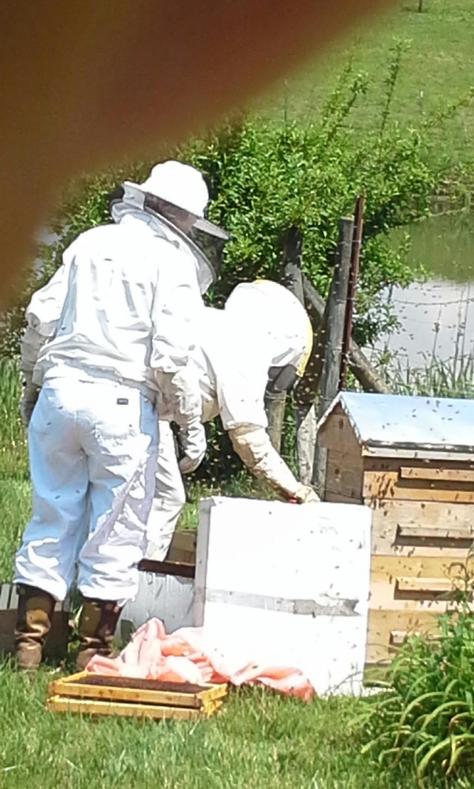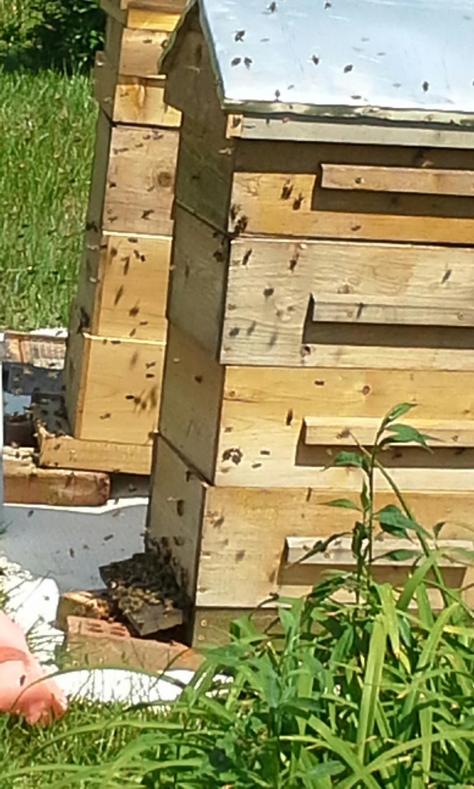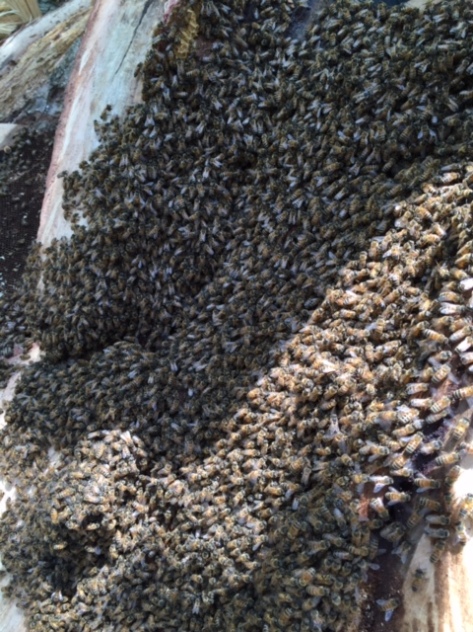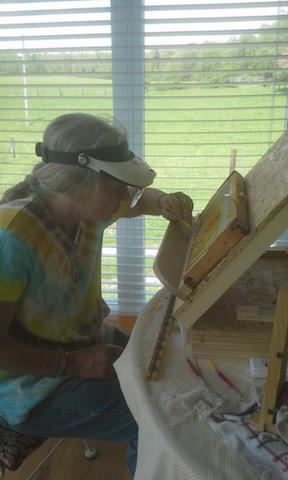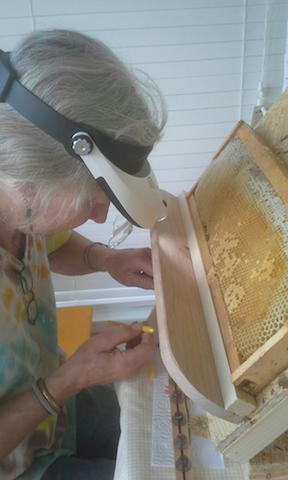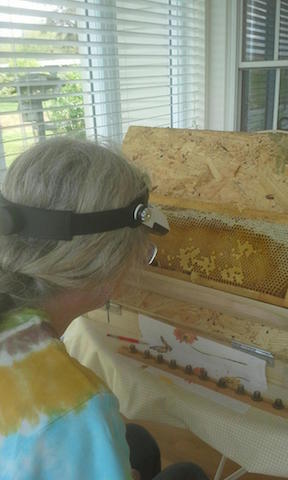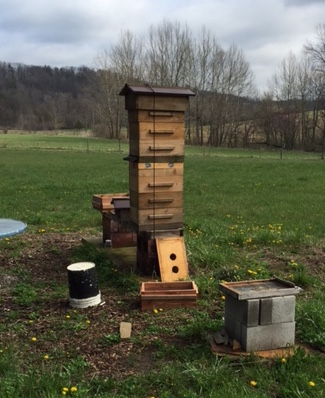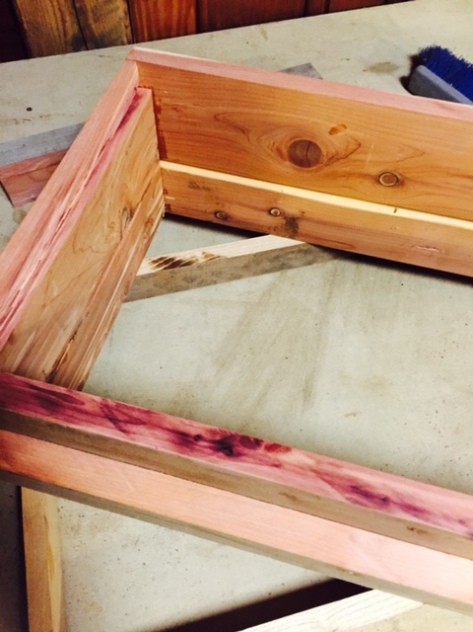Just kidding, well about the 74th part that is! Seems like it should be part 231.
Seven hives, that’s all I wanted. Whew! I’m so good at biting off big chunks of things to accomplish. Seven hives consists of 7 bottom boards, 35 boxes (5 for each hive), 7 inner covers, and 7 roofs. Then I set up seven locations in the apiary to place the hives on. It’s a lot of work, but I’m really excited about the possibility of expanding the “Miss Bee Haven” apiary this year. My bee buddy and I are delving into the depths of queen rearing, but that will be another post another day.
As I mentioned in an earlier post, a friend removed cedar boards from part of his house in order to add on a garage, and I was the lucky recipient of his discarded boards. Although it has been more work to deal with removing/breaking off nails, working around broken places and damaged tongues and grooves, the project has gone rather smoothly.
First I tackled the boxes, since there were more of those than anything. I glued two boards together to get the width I needed then cut them to size. I used a strip of the waste for handles.

As you can see, there is weathered color stain on some of the boards, but it’s all going to look like that eventually, so I’m not stressing over that.
Next step was the bottom boards:

I use two screens on my bottom boards. The top screen is 1/2″ screen with a spacer then 1/8″ screen. The theory behind this is that mites and hive debris fall through the 1/2″ screen and for the most part, the 1/8″ screen too. However, the 1/8″ screen is small enough that mites can still cling to portions of it and bees are fastidious housekeepers so they do walk around on screened bottom boards cleaning up the mess. They don’t really like to go under the 1/2″ screen, so they aren’t collecting bad things as readily as without the extra screen.
Inner covers are what goes on top of the boxes. With these hives, I’m experimenting with top entrances, so I left off the front piece of the inner cover to allow for entrance. I’ll just stuff something in there if the entrance needs to be reduced for some reason. Carpet padding makes a great entrance reducer, as does the foil insulation I used on my house.

I do plan on drilling two holes in the inner covers to accommodate jar feeders that can be enclosed with another box and kept securely inside the hives. When feeding jars are not in place, a piece of 1/8″ screen will keep the bees out of the roof area. I glued 3 pieces of wood together to make the inner covers.
I’ve been saving the worst, uh best (jk) for last! The roofs. It would be so much easier to build the flat roofs that predominate the bee housing market, but I just had to do something more decorative. The first 3 hives I built were sort of modeled from the Warre Hive and the roof was actually 3 parts, and a little complicated, and also heavy. I Googled and searched till I found a simpler hive roof design (found it on HoneyBeeSuite). I modified it to fit my box size and went with that.
As you can see in the photo, the end piece is a couple of boards glued together then simply cut out in the shape of the hive roof. I allowed 1-3/4 inches to “telescope” over the sides of the hive. A 1-1/2″ hole is drilled near the peak of the roof to allow for ventilation of the “attic” area. A piece of screen is nailed over the hole from the inside to keep unwanted critters out.

Now for the top–the metal went on better than I thought it would. (No gashes on the hands, but I did get one scratch) I was hoping to use brown metal rather than shiny but 24″ brown flashing is hard to find, and it’s cost prohibitive, and it’s thicker. A local ACE Hardware store carries 24″ metal flashing, so that’s what I used.
All seven roofs were completed yesterday–yay! Now I’ve just got to get a hole saw drill bit to drill the holes for the jars in the inner covers, get a roll of 1/2″ screen to finish the bottom boards, then add the hives to the apiary.
Then learn how to graft queens and add frames of brood, honey, pollen, etc. to make more hives….such a daunting task, but I’ll keep you posted!


 No, no, no, it’s not what you think! I haven’t had any of this stuff (pga) since a homecoming game party I attended while going to UT back in the 70’s. That hangover lasted for 2 days and I had deja vu while picking it up off the shelf in the liquor store the other day.
No, no, no, it’s not what you think! I haven’t had any of this stuff (pga) since a homecoming game party I attended while going to UT back in the 70’s. That hangover lasted for 2 days and I had deja vu while picking it up off the shelf in the liquor store the other day.